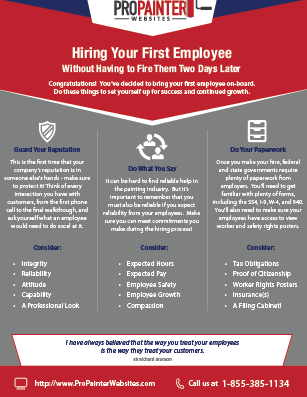Figure Out Exactly How Seasonal Variables Influence Commercial Exterior Paint Success And Uncover The Very Best Times To Make Sure Lasting Results For Your Project
Figure Out Exactly How Seasonal Variables Influence Commercial Exterior Paint Success And Uncover The Very Best Times To Make Sure Lasting Results For Your Project
Blog Article
Authored By-Burnham Chaney
When you're planning a commercial external paint job, seasonal aspects can make or break your results. You'll wish to consider how temperature level and humidity influence paint application and drying out times. Selecting the ideal period can guarantee your paint adheres appropriately and lasts longer. But which periods are truly the very best for this type of job? Allow's explore minneapolis house painter that can influence your task's success.
The Influence of Temperature on Paint Application
When you're preparing a business outside painting project, the temperature can dramatically influence just how well the paint sticks and dries out.
Ideally, you wish to repaint when temperature levels vary in between 50 ° F and 85 ° F. If it's also cool, the paint may not treat effectively, leading to problems like peeling off or cracking.
On the flip side, if it's too hot, the paint can dry as well swiftly, preventing proper adhesion and leading to an unequal surface.
You should also take into consideration the moment of day; early morning or late afternoon uses cooler temperature levels, which can be much more favorable.
Always check the producer's referrals for the certain paint you're utilizing, as they usually provide support on the optimal temperature level array for optimum outcomes.
Moisture and Its Impact on Drying Times
Temperature isn't the only ecological variable that affects your business exterior paint task; moisture plays a substantial role too. High humidity levels can decrease drying out times drastically, impacting the general top quality of your paint work.
When the air is saturated with wetness, the paint takes longer to cure, which can lead to concerns like bad attachment and a higher risk of mildew growth. If you're painting on a specifically moist day, be prepared for extended delay times in between layers.
It's critical to keep an eye on regional weather conditions and strategy appropriately. Ideally, go for humidity levels between 40% and 70% for ideal drying.
Keeping these consider mind ensures your project stays on track and provides a long-term surface.
Best Seasons for Commercial Exterior Painting Projects
What's the best time of year for your industrial exterior painting projects?
Springtime and early autumn are commonly your best bets. During these periods, temperature levels are light, and moisture degrees are typically reduced, producing suitable conditions for paint application and drying out.
Stay clear of summer's intense heat, which can cause paint to dry also quickly, leading to bad bond and surface. Likewise, wintertime's cool temperatures can hinder appropriate drying out and healing, risking the longevity of your paint job.
Aim for days with temperature levels between 50 ° F and 85 ° F for optimum results. painting company mn in mind to check the regional weather forecast for rain, as wet conditions can ruin your project.
Planning around these factors guarantees your paint job runs smoothly and lasts much longer.
Final thought
To conclude, planning your business outside painting jobs around seasonal factors to consider can make a significant difference in the outcome. By organizing work throughout the optimal temperature levels and moisture levels, you'll make certain much better attachment and drying out times. Bear in mind to watch on neighborhood weather prediction and pick the right time of year-- spring and very early fall are your best options. Taking these steps will certainly aid you achieve a sturdy and expert finish that lasts.
